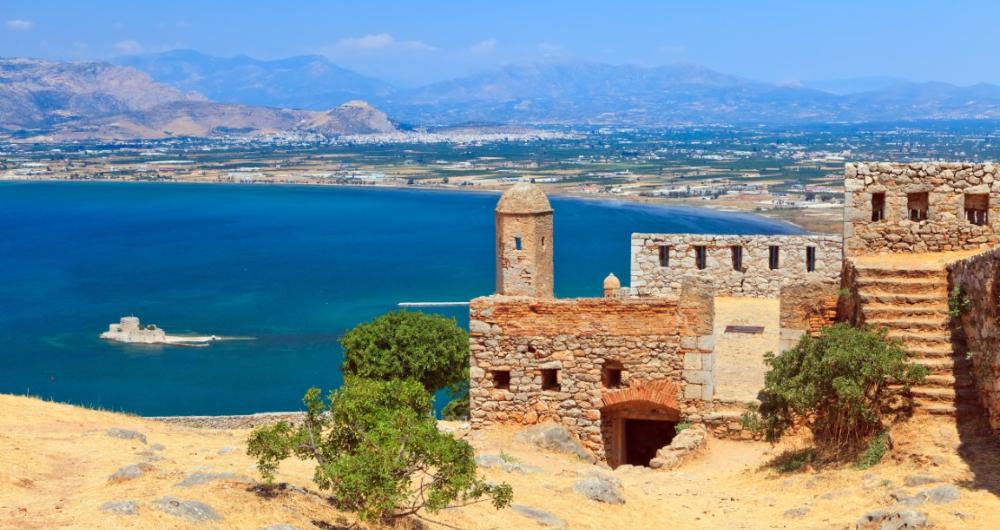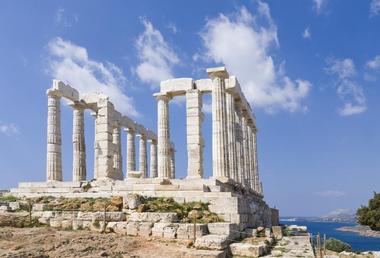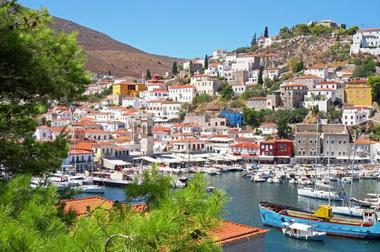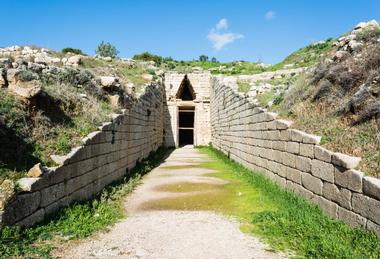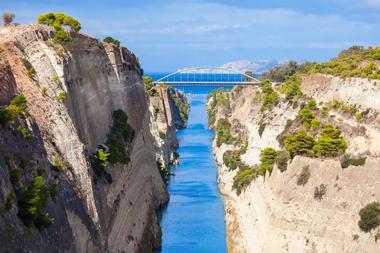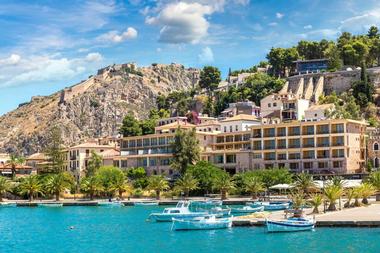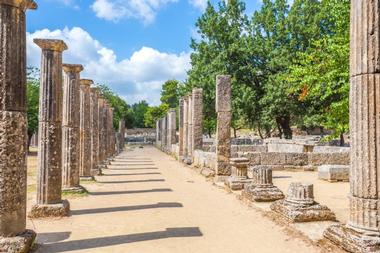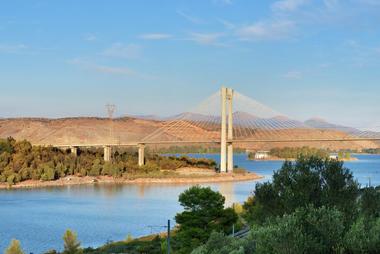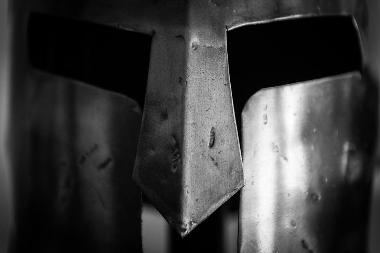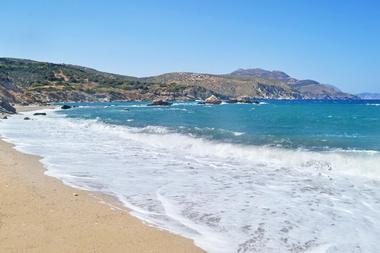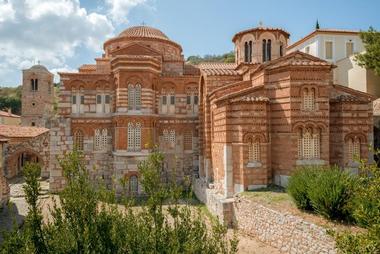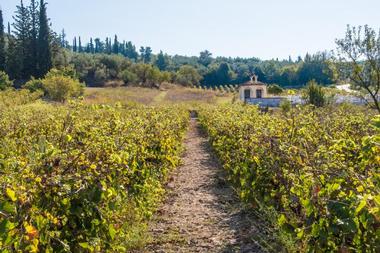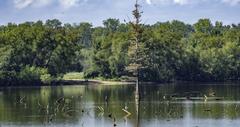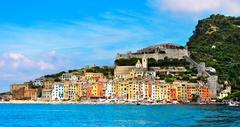Greece's capital city is one of the world's most historic cities, known as the cultural and political center of Ancient Greece's empire thousands of years ago. Many of the region's top architectural and archaeological landmarks are preserved in remarkable condition for their age, including Mycenae, connected to the conquering of Troy, and Olympia, the site of the first ancient Olympic Games.
Cape Sounion and the Temple of Poseidon
Cape Sounion and the Temple of Poseidon preserves one of the most significant monuments of the Golden Age of Athens, originally constructed around 440 B.C. The temple commemorates a sacred area that is presumed to date back to the Bronze Age, perched 200 feet above the Athenian sea.
It is believed to have been constructed by the same architect as the Hephaisteion and Rhamnous' Temple of Nemesis, constructed as part of Perikles' building project that also produced the Parthenon. An inscription signifies its dedication to the god Poseidon, constructed on the remains of an earlier poros temple that was razed in 490 B.C. by the Persians. Visitors can view the hexastyle temple's remains, which include several of its original six columns. Map
Delphi
Delphi, also known as Pytho, is a UNESCO World Heritage Site that preserves one of ancient Greece's most important sanctuaries, formerly known as the seat of the oracle Pythia. The site is ranked as one of the most important tourist destinations preserving the classical period of ancient Greece, set amidst a backdrop of magnificent nearby mountains. Though many of the site's original monuments have been lost to time, visitors can explore the foundations of landmarks such as the Temple of Apollo, which was constructed three times on the same location and was the site where the sitting Pythia priestess would utter the words of the Oracle. The Sacred Way route also traverses the remains of monuments such as the Sanctuary of Apollo, the 6th-century-B.C. Polygonal Wall, the Treasury of the Athenians, and a fourth-century-B.C. theater constructed to host musical contests at the Pythian Games. Archaeological collections are showcased at the Delphi Archaeological Museum, including friezes, stele, and votive offerings. Map
Hydra
Hydra is a lovely island located within Greece's Saronic Islands, located within the Aegean Sea near the Argolic Gulf and the Myrtoan Sea. The island was named after the Greek word for "water," a reference to its ample natural springs. Visitors can explore the island's lovely town of Hydra port, which is home to a charming crescent-shaped harbor that is lined with delightful restaurants, markets, art galleries, and tourist shops. Steep stone streets lead to residential areas, which are home to a number of hostelries. Attractions include the historic Tsamadou and Tombazis mansions, which are used today as a maritime academy and school of fine arts. Six Orthodox monasteries operate on the island, including the 10th-century Profitis Ilias.
Mycenae
Mycenae is an important archaeological site located approximately seven miles north of the city of Argos, just over an hour southwest of Athens' city center. The archaeological site preserves one of the major city centers of Greek civilization in the second millennium B.C., constructed on a hill rising 900 feet above sea level just inland from the Saronic Gulf. At its peak, the settlement was home to a population of more than 30,000 residents throughout its citadel and lower town area. It is known as the namesake of the Mycenaean civilization and was immortalized in Homer's Iliad for its conquering of Troy by its king, Agamemnon. Today, visitors can view artifacts recovered from the site at the National Archaeological Museum of Athens and can explore the preserved archaeological site directly, which is home to attractions such as the 10-foot Lion Gate and the Treasury of Atreus. Map
Corinth
Corinth is an ancient city located in Greece's Peloponnese region, known as one of Greece's largest and wealthiest city-states throughout the region's Roman era. A modern settlement at Corinth was founded in 1858 following the destruction of an historic settlement that had developed around the site of the ancient city. Beginning in 1896, the ancient city was excavated by archaeologists from the American School in Athens. Today, visitors can view a variety of preserved remains from one of the Classical world's most powerful cities, including the Doric Temple of Apollo, which was constructed around 540 B.C. Other ruins include the Acrocorinth, a hilltop fortification constructed 575 meters above sea level. The historic Corinth Canal, completed in the late 19th century, is one of the city's top tourist attractions today, linking the Aegean and Ionian Seas. Additional archaeological artifacts are on display at the Corinth Archaeological Museum, which showcases Corinthian pottery and other Neolithic finds. Map
The Meteora
The Meteora is a unique rock formation in central Greece that is home to one of the world's largest Eastern Orthodox monastery complexes, designated as a UNESCO World Heritage Site for its cultural significance. The monastery complex is home to six monastery buildings that are constructed on hill-like rounded boulders and massive natural pillars. It has become known as a major pilgrimage site for Christians around the world, creating an atmosphere perfect for meditation and spiritual elevation in conjunction with the splendor of the natural world. Monasteries at the site include the Holy Trinity Monastery, founded in the 15th century by the monk Dometius, which was highlighted in the James Bond feature film For Your Eyes Only, and the Varlam Monastery, which showcases frescoes by iconographer Frangos Katelanos. Map
Nafplio
Nafplio is one of Argolis' most beautiful towns, known around the world as one of the most romantic tourist destinations in Greece. The city has connections to ancient Greek mythology, believed to have been founded by Nafplios, the son of the god Poseidon. It showcases ties to the Trojan War in the prehistoric era and served as the original capital of Greece following its declaration of independence in the early 19th century. Today, visitors can view a plethora of preserved Medieval-era castles and monuments, Venetian and Neoclassical buildings, and Ottoman fountains, known for their architectural splendor and photogenic qualities. Visitors can explore the city's Old Town and its narrow cobblestone alleyways, view Mycenaean-era artifacts on display at the Archaeological Museum, or climb a thousand stairs to the top of the Palamidi Castle, which stands more than two hundred meters above sea level. Map
Epidaurus
Epidaurus is one of Greece's most important archaeological sites, located within the country's Argolis region on the northeastern end of Peloponnese. The region is famed for its Ancient Theatre, which was constructed as a religious ceremonial site in the late fourth century B.C. in honor of the Greek god Asclepius. It is famed throughout the world for its unique symmetrical archaeological design and incredible acoustics, hosting performances throughout the year today of ancient Greek dramas. Lush greenery surrounds the classical theater, which offers stunning views of the nearby valley. Guided tours of the region depart daily from Athens and offer opportunities for swimming and scuba diving on the area's lovely beachfront stretches. Map
Olympia
Olympia is best known as the birthplace of the ancient Greek Olympic Games in the eighth century B.C., home to extensive ruins of athletic training areas and stadiums. The site, which is located on the western end of the Peloponnese peninsula, is home today to the Archaeological Museum of Olympia, which exhibits artifacts such as a statue of the Greek god Hermes that is attributed to the sculptor Praxiteles. Visitors can explore the facility's Ancient Stadium, which showcases a spectacular arch and a 200-meter racetrack. Nearby, the Temples of Zeus and Hera are among the oldest preserved temples of ancient Greece. Each modern Olympic year, the Olympic flame is still lit at the altar of the Temple of Hera prior to each Olympic torch relay. Map
Aegina
Aegina is a lovely island within Greece's Saronic Islands, located approximately half an hour from Athens within the Saronic Gulf. The island is named in honor of Aegina, the mother of Greek hero Aeacus, who reigned as king of the island at one point during its ancient history. Today, it is known for its preserved ancient sites, including the Temple of Athena Aphaia, a spectacular Doric temple that sits in the island's center. Other important landmarks include the Byzantine Temple of Zeus Hellanios, constructed in the 13th century, and the Monastery of Agios Nectarios, which honors the saint Nectarios of Aegina. Charming villages and tourist resorts such as Kypseli, Agia Marina, and Souvala are home to delightful cafes, restaurants, and traditional taverns, while secluded beaches offer pristine coastline access. Map
Chalkida
Chalkida, also known as Chalcis, is the principal town on the island of Evia, located at the narrowest point of the Euripus Strait. The town is connected to the Greek mainland via two bridges, including a newly-constructed suspension bridge offering stunning views of the majestic waters on the gulf of Evia, which change direction every six hours and are considered to be one of Europe's most unique natural phenomena. Visitors can explore a wide variety of preserved historic buildings, including the 1884 Red House, the 1891 House of Statues, and the Emir Zade mosque. The city's 1684 Castle of Kanithos, which protected the city until the 19th century, offers stunning gulf views. Visitors can enjoy a plethora of excellent dining opportunities in town, including traditional Greek tavernas that line the region's shores and offer waterfront seating. Map
Thermopylae
Thermopylae is an historic site in Greece best known for its seminal battle in 480 B.C., in which a small force of less than seven thousand Greek soldiers, including the famed 300 Spartans, successfully held off substantially larger forces of Persians under the command of Xerxes.
The forces, which were immortalized in a famed epitaph by Simonides, were depicted in the feature film 300, starring Gerard Butler. The site is named in honor of its hot sulphur springs, which were considered to be the cavernous entrances to the underworld of Hades in Greek mythology. Visitors can learn about the region's cultural history at the Center for Historical Information, which offers unique interactive digital and 3D projection exhibits. A virtual reality film depicts the events of the historical battle, elaborating on the history of the 300 Spartans. Map
Evia
Evia is Greece's second-largest island after Crete, home to the country's famed Hiliadou region, which is named in honor of the Byzantine church of Panagia Hiliadou, constructed by Empress Theodora. The beautiful beachfront region is known for its lush vegetation, pebbled landscape, and excellent opportunities for windsurfing and kitesurfing at areas like Mourteri and Eretria Beach. Lovely hot springs offer rejuvenating experiences at the Edipsos thermal springs, which are home to gorgeous Neoclassical towers and structures constructed by Ernst Ziller in the 19th century. The unique Cape Kafireas, nicknamed the "Cape of Gold," is one of the Mediterranean's most difficult waterway passages, rumored to be the site of many Byzantine-era shipwrecks. Visitors can also explore the unique drakospita, or "dragon houses," of Palli Laka, which were constructed by the pre-Hellenic Dryopes tribe. Map
Saint Lucas Monastery
Saint Lucas Monastery , also known as Hosios Loukas, is a UNESCO World Heritage Site near the town of Distomo, located in Greece's Boeotia region. The historic walled monastery, which dates back to the Byzantine era, is known as one of Europe's most important art and architectural landmarks, home to spectacular gold mosaics and beautifully-painted frescoes. It was named in honor of the Greek monk Loukas, who was buried in its crypt in 953 A.D. and known as a great healer and prophet during his lifetime. Visitors can explore the monastery and its attached buildings, which include the Katholikon church and Theotokos temple, constructed around the turn of the 11th century to honor the Virgin Mary. Outside, the monastery's stunning landscape showcases lush green valleys and fields of olive trees. Map
Nemea
Nemea is Greece's most noted wine growing region, located along the northeastern edge of the country's Peloponnese peninsula. The region's winemaking industry dates back to at least the fifth century B.C., known for its varietals produced from its native Agiorgitiko grape strain. Visitors can explore the region's wineries, which are located just 20 minutes southwest of the city of Corinth.
More than 40 wineries are located within the region's boundaries, including Gaia Wines, known for their flagship Gaia Estate label, and Semeli Winery, which produces delicious rosé and tsipuro varietals. Several wineries are located near the Ancient Archaeological Site of Nemea, including Papaioannou Estates and the Wine Cooperative of Nemea. All wineries offer tastings and tours at select times throughout the week, with some featuring restaurants and overnight accommodations. Map


